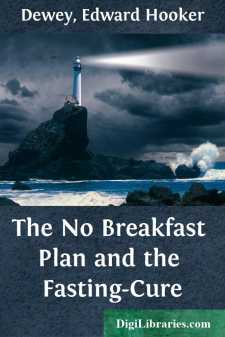Categories
- Antiques & Collectibles 13
- Architecture 36
- Art 48
- Bibles 22
- Biography & Autobiography 813
- Body, Mind & Spirit 142
- Business & Economics 28
- Children's Books 15
- Children's Fiction 12
- Computers 4
- Cooking 94
- Crafts & Hobbies 4
- Drama 346
- Education 46
- Family & Relationships 57
- Fiction 11828
- Games 19
- Gardening 17
- Health & Fitness 34
- History 1377
- House & Home 1
- Humor 147
- Juvenile Fiction 1873
- Juvenile Nonfiction 202
- Language Arts & Disciplines 88
- Law 16
- Literary Collections 686
- Literary Criticism 179
- Mathematics 13
- Medical 41
- Music 40
- Nature 179
- Non-Classifiable 1768
- Performing Arts 7
- Periodicals 1453
- Philosophy 64
- Photography 2
- Poetry 896
- Political Science 203
- Psychology 42
- Reference 154
- Religion 513
- Science 126
- Self-Help 84
- Social Science 81
- Sports & Recreation 34
- Study Aids 3
- Technology & Engineering 59
- Transportation 23
- Travel 463
- True Crime 29
The No Breakfast Plan and the Fasting-Cure
Categories:
Description:
Excerpt
A hygiene that claims to be new and of the greatest practicality, and certainly revolutionary in its application, would seem to require something of its origin and development to excite the interest of the intelligent reader. Methods in health culture are about as numerous as the individuals who find some method necessary for the health: taking something, doing something for the health is the burden of lives almost innumerable. Very few people are so well that some improvement is not desirable.
The literature on what to eat and not to eat, what to do and not to do, on medicines that convert human stomachs into drug-stores, is simply boundless. If we believe all we read, we must consider the location we are in before we can safely draw the breath of life; we must not cool our parched throats without the certificate of the microscope. We must not eat without an ultimate analysis of each item of the bill of fare, as we would take an account of stock before ordering fresh goods; and this without ever knowing how much lime we need for the bones, iron for the blood, phosphorus for the brain, or nitrogen for the muscles. In short, there is death in the air we breathe, death in the food we eat, death in the water we drink, until, verily, we seem to walk our ways of life in the very valley and shadow of death, ever subject to the attack of hobgoblins of disease.
How many lives would go down in despair but for the miracles of cure promised in the public prints, even in our best journals and monthlies, we cannot know. It is the hope for better things that sustains our lives; suicide never occurs until all hope has departed. Even our medical journals are heavily padded with pages of new remedies whose use involves the most amazing credulity. Perhaps it is well, in the absence of a sound physiological hygiene, that the people who are sick and afflicted shall be buoyed up by fresh, printed promises. Perhaps it is also well for the physician to be able to go into the rooms of the sick inspired from the advertising pages of his favorite medical journals.
Are they not new stars of hope to both physician and the people? Why should we not hope when new remedies are multiplying in such infinite excess over newly discovered diseases? New diseases? What is there essentially new that can be treated with remedies, in the coated tongues, foul mouths, high temperature and pulse, pain, discomfort, and acute aversion to food, that is to be found in the rooms of the sick? Are there really specifics for these conditions?
The hygiene to be unfolded in these pages is so new, so revolutionary, that its first impress has never failed to excite every form of opposition known to language, and yet its practicality is so great that it is rarely questioned by those who fairly test it. It has not been found wanting in its physiology, nor has it failed to grow wherever it has found lodgement.
The origin and development of this new way in health culture seem to require something of professional autobiography, that it may be seen that it is a matter of evolution and not of chance, not a fad that has only its passing hour.
After receiving my medical degree from the University of Michigan, and serving a term as house physician to the U. S. Marine Hospital at Detroit, Michigan, I entered one of the large army hospitals at Chattanooga, Tenn., at the beginning of the Sherman campaign in Georgia, where I found a ward of eighty sick and wounded soldiers fresh from the battle of Resacea....


